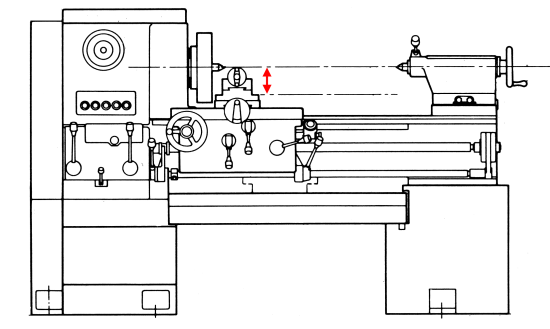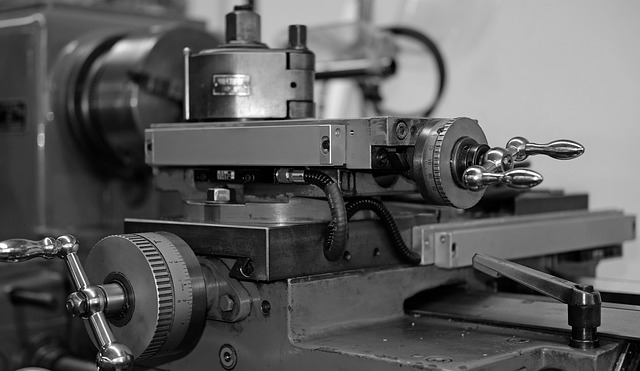Taper Talk: How to Cut a Taper on a Lathe Like a Pro!
The method of changing the diameter of a lathe workpiece uniformly from one end to the other is called tapering. It is a machine that performs work, and tapers can be either internal or external.
A wood lathe is a multifunctional device where you can do several jobs like – cutting, drilling, boring, milling, and turning. With the help of proper methods, you can perform this work very easily. Among the works turning is the simplest one.
Workers use this turning method to minimize the width of the cylindrical bar. If any type of taper on the piece of wood is needed, then workers do the taper-turning operation.
Turning Tapes On A Lathe
Tapers perform mainly two purposes. They are ornamental, or they are mechanical. Sometimes it may be both.
Ornamental Tapers – The ornamental tapers make the job look properly finished so they can be convenient enough. Here the angle of the taper is not critical. One surprising fact about ornamental tapers is that sometimes they appear as if the work is done with less accuracy but, in reality, it needs more accuracy than one can expect. If the ratio of the length and breadth on a taper is high, then encountering small errors are very significant.
Use of Ornamental Tapers
Ornamental tapers are used for external purposes only.
Ex- making a flute.
Mechanical Tapers- From a mechanical point of view, tapers have some properties. Suppose a male taper has been fixed with a female taper, then the axis of the male taper will automatically line up with the female taper’s axis. These can only happen if the angles of the tapers are similar.
Another property is that if the angle of a pair of tapers gets smaller, then they will lock together. But, if the angle of a pair of tapers is large, then they will never lock together.
Use of Mechanical Tapers
For these specific features, tapers are widely used in industries. As a result, according to the type of usage, the standard sizes of the tapers depend.
Ex – Morse tapers and international tapers.
Here are some of the methods through which you can cut a taper on a lathe. These will help you to perform the work more easily and comfortably.
There are four basic methods of taper turning. They are –
- Tailstock set over method.
- Compound rest method.
- Taper turning attachment method.
- Combining feeds method.
Below I am Going To Discuss These Methods.
Formation Of The Tool
To make a short taper as per your requirement, this is a very secure method.
The lathe axis and the feed both work parallelly. The form of the cutting tool should maintain the taper angle. Cross and longitudinal feed can also be simultaneously used.
The notable thing is that the taper length should be more significant than the length of the edge of the cutting tool.
But this process creates a lot of vibration because the cutting edge flattens the metal. Though the work is done at a very slow speed, it requires heavy force. The vibration of the tool depends on the size of the tool.
Setting The Tailstock
After there is no taper attachment available, the method of setting up the tailstock is used. Here, the machine bed axis is set at an angle where the axis of the tool rotates.
The tool moves in a parallel position with the machine bed. The basic value of the tailstock is set in mm or inches and not in degrees.
The work shall be done between the centers as the work is mainly concentrated at a particular angle. After finishing the turning operation, you should carefully set back the tailstock otherwise, it will be improper.
If you are struggling to set a parallel position, you should follow these simple steps :
- You have to move the nose of the tool to the left corner of the taper to grip a piece of paper within the tool and the tapered surface.
- Keep a check on the crossfeed dial reading, then take the tool out.
- To get a grip on the paper, you have to advance the tool to the right corner of the taper.
- Then take the readings. If it corresponds, then the tool is perfectly set.
Here are some steps of this setting :
- Arrange all the tools as a parallel turning.
- Slightly close the clamps of the tailstock.
- Adjust the screws unless you get the required set.
- Roughly cut the piece for a try.
- Once you get the desired taper, polish it properly along with the sides.
Compound Slide
The compound slide is a method in which you can make a short and steep taper. This method is also quite the same as other lathe methods. You have set the piece in the chuck with clamps for a stronghold.
Note, before clamping, the compound rest shall be turned to the desired angle as the piece rotates along with the lathe axis. The compound slide rotates on its Central pins in both directions because it is fixed on the cross slide at the top, making it flexible. You can taper turning on both the inside and outside of the workpiece.
The compound slide has two basic concepts.
- You can move the cutting tool as you wish because you can adjust the angle by loosening the nuts and bolts.
- The job axis rotates parallel to the axis of the bed of the lathe.
For setting the cutting tool, the tool post is used. To get the desired path and angle you have to turn the screws accordingly.
If the tool travels according to the path of the compound slide, you will get your required taper.
Using the compound slide method, you have to remember some important tips. They are –
- You have to be very much careful when you set the tool height point in the center.
- It is dangerous and risky to overhang the tool.
- After and before tapering, use lubricants for smoothness.
Attachment of The Taper Turner
The most important part of a taper turner is the attachment of the taper turner. The job is different from the others as a tray, or a bottom bracket is needed for its attachment. The workpiece is attached to the rear end of the lathe bed.
A guiding bar is used for the desired turning angle. The guiding bar also acts as the center during the operation. This bar also can swing, giving it a flexible angle.
It moves in the guide bar with the help of a guide block. The guide block connects the rear end of the crossing slide, which helps it to move. To connect the cross slide, one should remove the binder screw.
After the binder screw is removed, the cross slide is free from the slide screw. Similar to compound slides, it also has degree graduations. You can perform any size of turning operation with the help of this method.
How Tapper Turning Attachment Works :
This attachment acts as a kind of guide set in the backside of the lathe and helps to regulate the axis of the lathe, keeping the lathe on the corner track. This also helps to free the cross slide, along with guiding it on the track of the taper to cut.
A bracket is seen attached to the lathe bar which carries a guide bar. You can turn the guide to your desired angle. A bolt is clamped to the guide bar to keep it in contact at a place.
The guide block is joined to the cross slide of the lathe by the link and lock. Making it free to slide along the guide bar. It also allows the cross to move freely on its way.
But, to get free movement, you have to remove it from the saddle. To remove it from the saddle, you have to loosen the cross-feed screw.
After each cut, set the depth of cutting for the tool, like all other methods, the rotating handle of the compound slide is used to feed the tool a perfect depth to cut objects. The normal position for setting the compound slide is 90°.
And the position of the guide bar and the taper tool should be parallel to each other.
Pros and Cons of Taper Turning

Pros
- The taper-turning method creates no problem with the regular lathe setup.
- The attachment of this method is easy and quick.
- You get a better-finished product.
- The attachment can be used as taper-turning threads.
- Both the internal and external taper can be used.
- It can perform for a long time with the help of an automatic feed giving a better surface.
- It is a very simple and precise method.
Cons
- If the settings are not perfect, then you will get an imperfect taper.
- Only short tapers can be cut.
- Produces vibration very much.
Conclusion
If you want a taper as accurately as possible, then it will depend on the height of the cutting point of the tool, which must be at the center height of the lathe. This is all about cutting a taper on a lathe. Someone does not need to do taper cutting on a big lathe machine, but you can also use a mini lathe machine. I hope you will get a piece of proper knowledge about taper cutting, and the mentioned methods and steps will guide you properly.
Hi, my name is Charles Winn, A DIY enthusiast, Mechanical Engineer. I was born and raised in Springfield, Missouri. I am also a father of two troublemaker kids, a terrible photographer, and I love to play chess.








